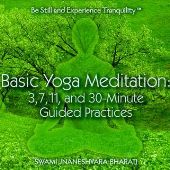|
|
There are some 200 or more texts entitled as Upanishads, although some are lost, only known about because of being referenced in other Upanishads. It is estimated that the Upanishads were written in the period from the fifth to tenth centuries BCE, although the principles had been taught orally for a very long period prior to that; some say by thousands of years more. There are 108 Upanishads (listed in Muktika Upanishad) traditionally studied and practiced, and of these, there are twelve (some say ten or eleven) known as "major" Upanishads. These twelve are considered thorough in themselves. The twelve major Upanishads are: Aitareya, Brihadaranyaka, Chandogya, Isha, Katha, Kauhsitaki, Kena, Mandukya, Mundaka, Prasna, Svetasvatara, and Taittiriya. It has been said that most important, all inclusive of these is the brief twelve verses of the Mandukya Upanishad. Here are a few of the
Major Upanishads: Other Upanishads:
Bahvricha Upanishad Tripura: Tripura Upanishad
Swami Rama Describes Upanishads (From Enlightenment
without God, The Upanishadic literature is not a religious scripture and is free from dogma and doctrines. It is not a part of any religion but is philosophy for all times and for all. This philosophy does not oppose any school of thought, religion, or interpretation of the scriptures, but its methods for explaining its concepts are unique. The Upanishads should not be confused with the religious books of the East; there is a vast difference between the philosophy of the Upanishads and the preachings of any of the religious scriptures of the world. In religion and religious books, there is little practicality and much theory. One is not supposed to interpret religious sayings, for there is the possibility of distortion. For this reason, their explanation is delegated to a few teachers and preachers who are considered to be the custodians and authorities on these scriptures. Common people do not have the opportunity to study the scriptures in depth, but instead must rely on the interpretations of such preachers who may show no signs of enlightenment and yet have influence over the conscience of the masses. Whether these clerics actually know and practice religious truths or not is never questioned, and those who do question are considered to be atheists and heretics. Intellectual bankruptcy such as this leads the masses to blind faith and causes many wars and divisions in the human race. For the younger generation today, however, empty religious preachings are not fulfilling, for the modern mind likes to use reason and logic before it accepts anything as truth. The Upanishads prepare, inspire, and lead the student to know and realize the Ultimate Truth. First of all, the philosophy of the Upanishads frees one to cast away his intellectual slavery to blind faith, superstitions, sectarian beliefs, and dogmas. Then it helps one to expand his individual consciousness to Universal Consciousness; thus one's personality is transformed, and one becomes a universal being. An individual is essentially Brahman, or identical to Universal Consciousness, and direct realization of that truth is called enlightenment. Current religious preachings, on the other hand, are enveloped in a thick layer of dust, and they need a complete shakeup. Religion needs modification to suit the needs of modern man. There seem to be two options for humanity: either it stops listening to the preachings, starts seeking the truth, and rejoices in the broader awareness of truthful living; or it continues to follow religious dogma, fails to attain the next step of civilization, and remains in ignorance and suffering. Upon careful analysis of the living and thinking structure of modern human society, anyone can see that the process evolution is in a state of stagnation. All current research is directed to the external world; thus the human goal has become materially oriented and superficial. Human beings today have nothing better to live for than acquiring many comforts. These may be necessities and means, but because attaining them lacks a goal or aim, they create a hollow and empty philosophy that brings only strain and stress. The preachings of religion make a person dependent on priests, temples, idols, blind faith, and dogma, and dependence is a habit of the lower mind. Such crutches may be useful at a certain stage for some people, but they do not lead to Ultimate Truth. A dependent mind is not free, and without freedom, enlightenment is impossible. Religious dogmas are full of beliefs and myths that do not satisfy the human intellect and that bind believers to a narrow view of life and human potential. Such preachings instill more fear than love in the hearts of the masses. Religion either promises salvation or threatens the tortures of hell, but it does not provide sound solutions to the hellish problems and situations that plague human beings here and now. Nor does it satisfactorily explain life before birth or after death. One of the main themes of Upanishadic philosophy, however, is to attain a state of fearlessness, cheerfulness, and self-confidence. In addition, the Upanishads lead the student to know life in its totality. Knowledge of life before birth, knowledge of now, and knowledge of life hereafter can be realized through the methods given in the Upanishads. The Upanishads provide systematic methods for self-training, self-transformation, and self-enlightenment. They lead aspirants "from the unreal to the Real," from darkness to Light, and from mortality to Immortality.
-------
|
|
